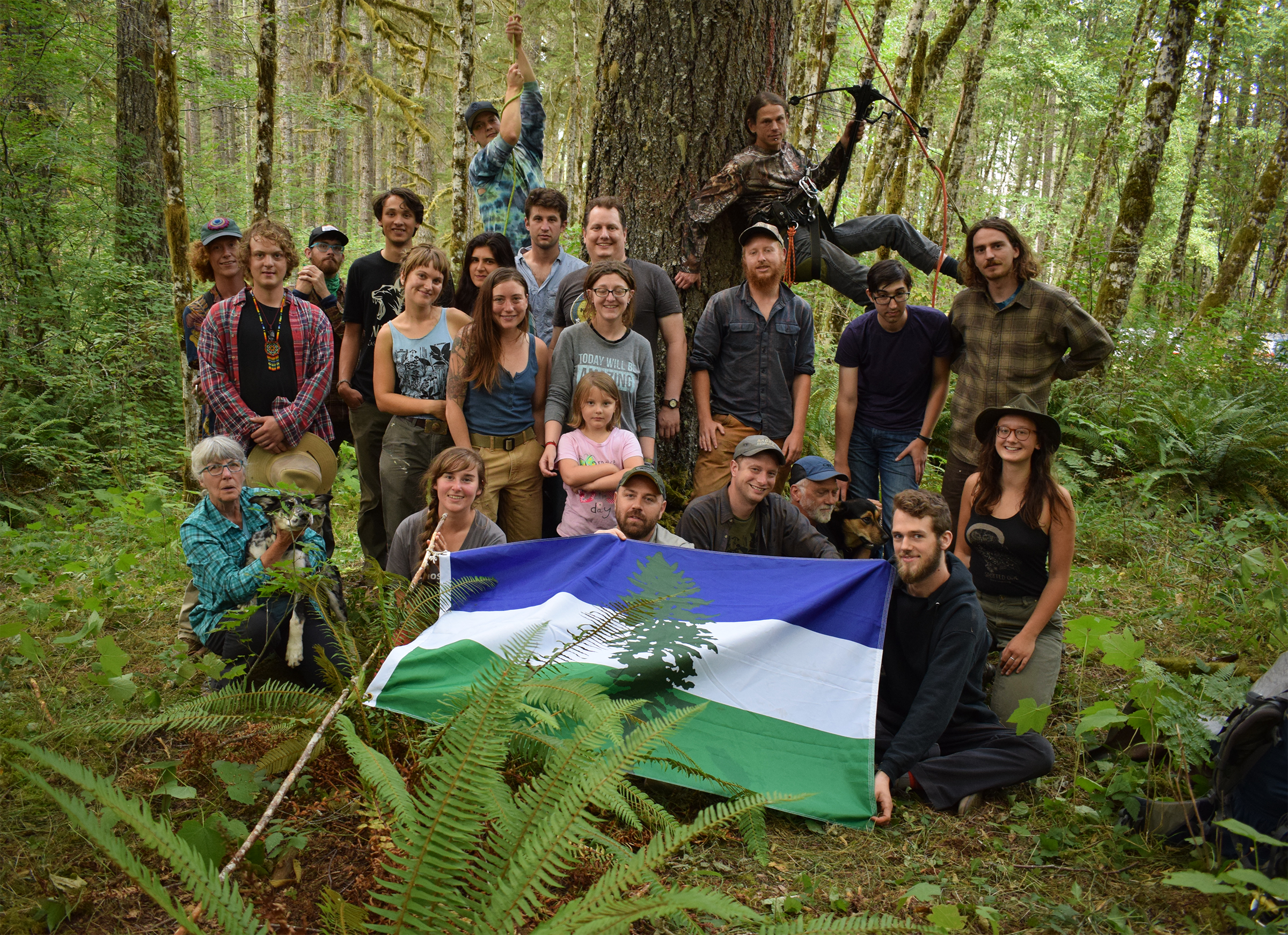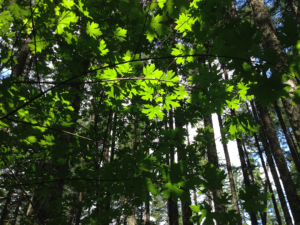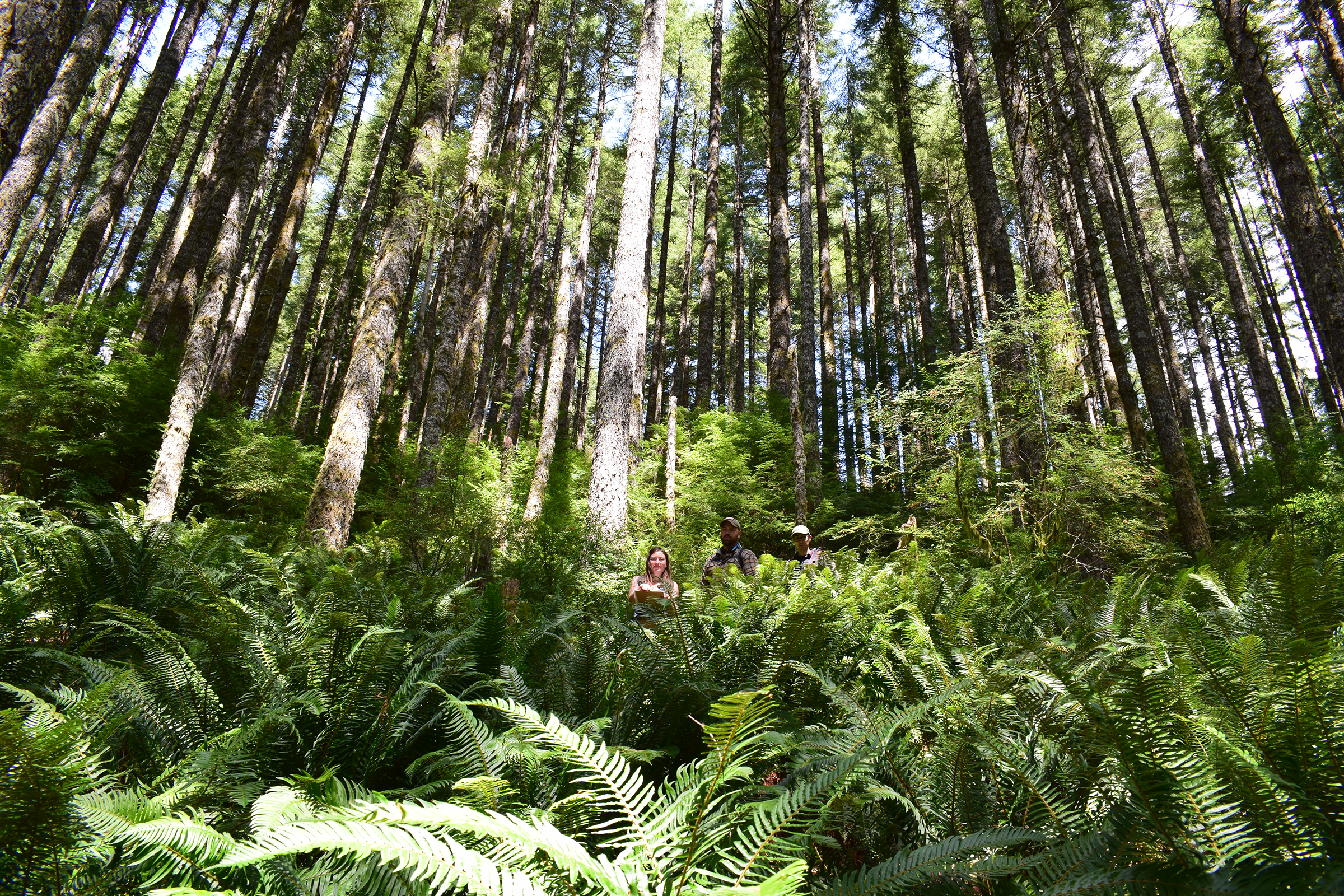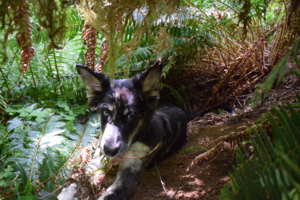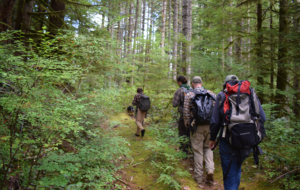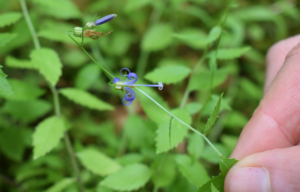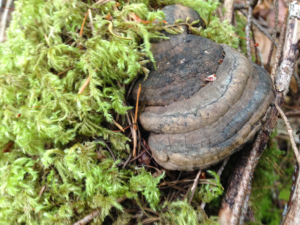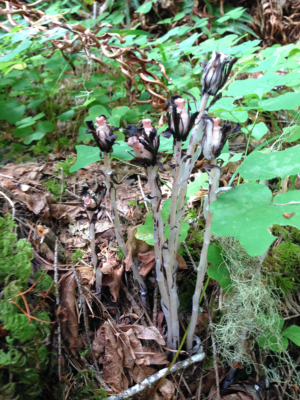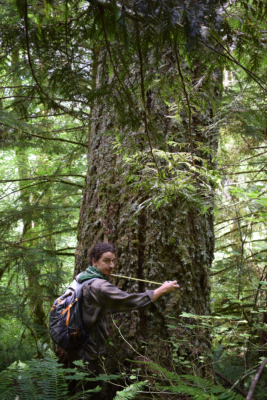By Sam Krop, Grassroots Organizer
This August, 30 Cascadians gathered together for a weekend in a backyard timber sale to learn about field checking for forest defense.
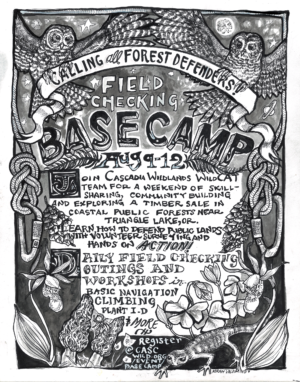 Cascadia Wildlands’ first ever Field Checking Basecamp brought together forest lovers from across the state for a weekend of field surveying, skill sharing, and community building in public lands slated for the cut. We explored hard to reach ridges, found stands of thriving old growth, stumbled across unmarked waterways, and even saw marbled murrelet fly through the forest canopy in the early morning light.
Cascadia Wildlands’ first ever Field Checking Basecamp brought together forest lovers from across the state for a weekend of field surveying, skill sharing, and community building in public lands slated for the cut. We explored hard to reach ridges, found stands of thriving old growth, stumbled across unmarked waterways, and even saw marbled murrelet fly through the forest canopy in the early morning light.
Field checking is the commonsense tactic of comparing what a logging proposal says on paper with what is actually happening on the ground. Essentially, we visit forests proposed for logging and see what’s there. Through our visits, we often find things that don’t appear in the two-dimensional world of paper and ink. We use the information gathered in the field to make substantive comments on logging projects, ensure that special places are protected, and, when necessary, litigate against irresponsible timber proposals.
Basecamp was hosted in the N126 timber sale, located in Bureau of Land Management (BLM) run public lands near Triangle Lake. The N126 sale is among the first of a new trend of “landscape” style management plans coming from the local Eugene/Springfield BLM office, where larger and larger areas are being placed on the chopping block and lumped under the same logging proposal. In fact, the N126 project area covers 33,000 acres of land, and spans multiple watersheds in the jurisdiction of two field offices (Siuslaw and Mary’s Peak).
Another unique aspect of the N126 timber sale is that it is proposes to do commercial logging within forest that has been designated as “Late-Successional Reserve” (LSR). The management of LSR land is supposed to focus on creating more “late-successional,” or old growth, forest habitat, which the BLM argues that logging in this forest will help do. In the purpose and needs statement for this timber sale, the BLM claims that, “Many of these stands are homogeneous single-story timber plantations and have low stand complexity or biological diversity.” They suggest that commercially logging the area will enhance stand complexity and provide more habitat for special species like the marbled murrelet and spotted owl.
We decided to host Basecamp in this timber sale because we wanted to see if what the BLM says about the forest there is true. Our goal was to see as much of this sale as possible, and to grow our ranks of volunteer field surveyors equipped with skills to help us learn about the forests that belong to all of us.
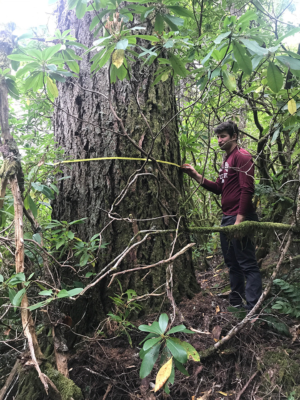 Basecamp kicked off with a training in the basics of field checking. We gathered around and discussed the background of the N126 timber sale, shared strategies for describing a forest stand, identifying indicator species, and measuring canopy cover. We all took turns estimating the slope of a nearby hill, measuring a neighboring giant Douglas Fir, and discussing what we might be looking for when exploring on the ground. When everyone was equipped with the basics, we split into groups — each led by an experienced WildCAT field checker — and headed out to explore the forest. With over thirty interested and eager volunteers, we were able to split off and cover ample ground over the course of the weekend.
Basecamp kicked off with a training in the basics of field checking. We gathered around and discussed the background of the N126 timber sale, shared strategies for describing a forest stand, identifying indicator species, and measuring canopy cover. We all took turns estimating the slope of a nearby hill, measuring a neighboring giant Douglas Fir, and discussing what we might be looking for when exploring on the ground. When everyone was equipped with the basics, we split into groups — each led by an experienced WildCAT field checker — and headed out to explore the forest. With over thirty interested and eager volunteers, we were able to split off and cover ample ground over the course of the weekend.
Our findings varied across the thirteen units we surveyed. While some groups documented younger plantations next to matchstick forests, other groups found healthy complex forest stands, quietly flowing waterways with carpets of sword fern and salal, and even old growth habitat hiding deep within the sale.
At the end of each day, we shared our experiences exploring the timber sale with our groups, and we all learned that field checking makes for great storytelling. We laughed together as one group recounted their experience bushwhacking through huckleberry as high as their heads, praised another group that ascended a steep ridge to gain access to a worthwhile remote unit, and listened in awe as another recalled their discovery of a giant 82” cedar growing patiently in a patch of legacy forest. All in all, through our explorations it became clear that this area is anything but homogeneous.
Full days of field checking were followed by cleansing visits to the local swim spot before diving into late afternoon skills shares in navigation, herbal first aid, arboreal climbing, and botany. Throughout the weekend, participants not only gained useful skills, but each of us became a meaningful part of the community, playing a role toward our shared goal of protecting Cascadia’s forests. In the field, one person may be the note taker, another the navigator, someone else the plant expert, and another the storyteller at the end of the day. Each one of us came to the woods with something to offer, and like spokes in a wheel, each us formed a vital part of the whole.
Through our work at Basecamp, we were reminded that common cause is the root foundation of community, and working together makes our root system grow, link, and fortify.
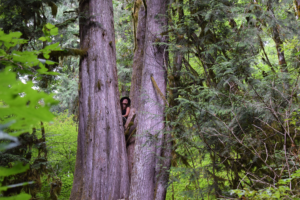 In the end, we accomplished what we came to the forest to do—we gained valuable information about thirteen forest stands currently slated for commercial thinning, and we left Basecamp with a deeper understanding of the forest that we came to advocate for. But we also came away with much more. Each of us left Basecamp with new friends and a strong, scrappy community that can we can trust to work together for forest defense.
In the end, we accomplished what we came to the forest to do—we gained valuable information about thirteen forest stands currently slated for commercial thinning, and we left Basecamp with a deeper understanding of the forest that we came to advocate for. But we also came away with much more. Each of us left Basecamp with new friends and a strong, scrappy community that can we can trust to work together for forest defense.
For me, this was the most powerful part of Basecamp — something I’ll carry home to fan future embers.
Now more than ever, communities should be working together to decide how to protect and defend healthy backyard forests. While management agencies increasingly rely on prediction and remote sensing technology to determine the location of healthy forest and suitable habitat, Cascadia Wildlands believes in the value of site-specific observations and really getting to know a place. Our explorations in the N126 timber sale over the Basecamp weekend proved just how much beauty, complexity, and life can be uncovered in just a square mile of public land.
Less than three percent of native forests remain in this country, and it’s up to us to protect what’s left.
The first step is getting outside and seeing what’s there.
- Shelf fungi, or Bracket fungi, are polypores — a group of fungi that are among the most efficient decomposers of lignin and cellulose, the main components of wood. Polypores are much more diverse in old natural forests with abundant dead wood than in younger managed forests or plantations. Unfortunately, a number of species have declined drastically and are under threat of extinction due to logging and deforestation.
- Ghost Flower/Plant, Monotropa uniflora, is a herbaceous perennial plant native to temperate regions. It is white and does not contain chlorophyll. Instead of generating energy from sunlight, it is parasitic, a mycoheterotroph — a symbiotic relationship between plants and fungi. Its hosts are certain fungi that have a symbiotic relationship with trees (aka mycorrhizal). Meaning it ultimately gets its energy from trees by way of fungi. The complex relationship that allows this plant to grow also makes propagation difficult.
The WildCATs — Cascadia Action Team — runs ongoing survey visits to nearby forests proposed for logging, and regular public trainings to teach field checking for forest defense. Come join us!
Check out our events listed on Facebook.
Join the WildCAT team and get involved in our forest defense work!

